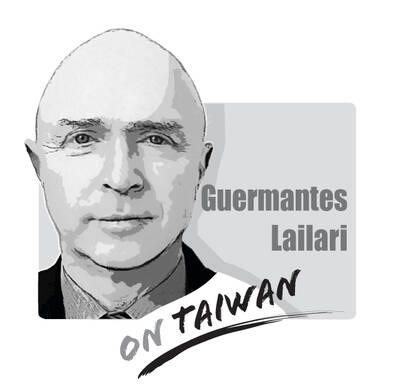The past few months have seen an unprecedented crisis unfold across most continents. The coronavirus pandemic and the disease it causes, COVID-19, have infected nearly 1.6 million people and led to more than 100,000 deaths. These numbers are expected to rise.
Perhaps just as shocking as the virus and the social and economic destruction it has brought with it is the lack of leadership from China and the US and their mishandling of the situation.
Maybe even more surprising is the responsibility and adeptness shown by middle powers in Asia, such as Taiwan, South Korea and Singapore.
China, led by the Chinese Communist Party, originally silenced journalists and doctors who tried to inform the world of the virus, first reported in Wuhan.
After weeks of denying the seriousness and spread of the virus, as well as spinning shifting narratives, Beijing locked down hundreds of millions of citizens, including entire cities. Information related to the public made many skeptical about the validity of the number of reported cases and casualties.
Chinese President Xi Jinping (習近平) disappeared for 12 days, leaving many to wonder what kind of signal this sent.
Under the leadership of US President Donald Trump, the US has not fared any better and has arguably failed much worse. With a near three-month head start, the Trump administration seems to have pre-emptively acted on very little.
Now, with more cases than anywhere else, and with dire death rates in cities such as New York and New Orleans, the US seems to be inundated in its own mismanagement.
Over the past few weeks, Trump has attempted to monopolize a potential virus cure, lied to the public by saying “anybody that needs a test gets a test” and stirred up anti-Chinese rhetoric endangering Asian-Americans.
This amalgamation of selfishness, deceitfulness and hatred is not what the country, nor the world, needs in a time of panic.
While these superpowers have blundered their responses to the crisis, Asian middle powers have stepped up by showcasing swift government responses, transparency and accountability.
Contrary to China’s lack of openness, President Tsai Ing-wen (蔡英文) mandated that Taiwanese media relay information related to the coronavirus hourly for near-constant updates. Taiwan also implemented initiatives the day the virus was reported to the WHO, of which it is not a member.
South Korean President Moon Jae-in’s government acted swiftly after an initially slow start; mass testing, social distancing and listening to medical experts all helped flatten the curve throughout the country.
Singapore kept infected patients in hospitals over concerns of a second wave and has contact tracing teams investigating potential transmissions.
That Taiwan, South Korea and Singapore have different forms of governments proves that the comparison of whether a democratic or authoritarian regime works best in times of duress is moot.
Rather, what theses nations have proven is that middle powers rose to the occasion when larger ones did not. With transparent and competent leadership nationally, regionally and globally, the ascendancy of these nations offers much to hypothesize on what the world order would look like after the pandemic has ended.
Will the squandered leadership by China and the US be forgiven? While it is certain the globe would still need these behemoths to play a pivotal role in geopolitics, perhaps some of the social, political and economic power the bipolar world once saw would diminish, leaving a vacuum for middle powers to fill.
Will Doran is an independent researcher who lives in Jakarta. He is a graduate of the University of London’s School of Oriental and African Studies.

Chinese state-owned companies COSCO Shipping Corporation and China Merchants have a 30 percent stake in Kaohsiung Port’s Kao Ming Container Terminal (Terminal No. 6) and COSCO leases Berths 65 and 66. It is extremely dangerous to allow Chinese companies or state-owned companies to operate critical infrastructure. Deterrence theorists are familiar with the concepts of deterrence “by punishment” and “by denial.” Deterrence by punishment threatens an aggressor with prohibitive costs (like retaliation or sanctions) that outweigh the benefits of their action, while deterrence by denial aims to make an attack so difficult that it becomes pointless. Elbridge Colby, currently serving as the Under
The Ministry of the Interior on Thursday last week said it ordered Internet service providers to block access to Chinese social media platform Xiaohongshu (小紅書, also known as RedNote in English) for a year, citing security risks and more than 1,700 alleged fraud cases on the platform since last year. The order took effect immediately, abruptly affecting more than 3 million users in Taiwan, and sparked discussions among politicians, online influencers and the public. The platform is often described as China’s version of Instagram or Pinterest, combining visual social media with e-commerce, and its users are predominantly young urban women,
Most Hong Kongers ignored the elections for its Legislative Council (LegCo) in 2021 and did so once again on Sunday. Unlike in 2021, moderate democrats who pledged their allegiance to Beijing were absent from the ballots this year. The electoral system overhaul is apparent revenge by Beijing for the democracy movement. On Sunday, the Hong Kong “patriots-only” election of the LegCo had a record-low turnout in the five geographical constituencies, with only 1.3 million people casting their ballots on the only seats that most Hong Kongers are eligible to vote for. Blank and invalid votes were up 50 percent from the previous
Japanese Prime Minister Sanae Takaichi lit a fuse the moment she declared that trouble for Taiwan means trouble for Japan. Beijing roared, Tokyo braced and like a plot twist nobody expected that early in the story, US President Donald Trump suddenly picked up the phone to talk to her. For a man who normally prefers to keep Asia guessing, the move itself was striking. What followed was even more intriguing. No one outside the room knows the exact phrasing, the tone or the diplomatic eyebrow raises exchanged, but the broad takeaway circulating among people familiar with the call was this: Trump did